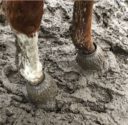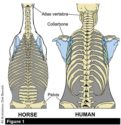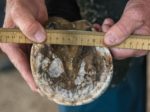Advertise Follow Us
Education
Therapeutic Farrier Achieves Hoof-Care Goals Using Pads and Pour-ins
Products can provide frog support, cushion the sole and reduce concussion
Read More
Friday’s Farrier Facts & Figures
Frequently Encountered Pathologies | Where Farriers Purchase Products
Read More[Podcast] A Conversation with Bob Smith
In this episode of the American Farriers Journal podcast, brought to you by Pennwoods Equine, Executive Editor Jeremy McGovern talks with Bob Smith, a California farrier about farrier business advice, the challenges of running a farrier school and his legal battle with the state of California.
Read More
Hoof Moisture Content Plays a Major Role in Foot Quality
Shorter trimming intervals, moisture barriers and proper supplementation can aid farriers in regulating hoof moisture
Read More
Equine Reciprocating Systems: Extreme Skeletal Specializations
In this sixth installment, Dr. Deb Bennett discusses the impact of the equine joint shape on the horse’s forelimb
Read More
Radiograph Method Can Fall Short in Determining Sole Depth
ELPO study illustrates need for closer evaluation of hoof tissues
Read More
Hall of Fame Farrier Dave Farley Shares 12 Points of Reference to Use When Trimming
Using a multidimensional approach can increase the likelihood of achieving a balanced foot
Read More
The Benefits of Pads and Packing in the Show Horse Ring
Equine athletes compete more and at a higher level with sound choices
Read More
6 Steps to Cure a Microbial Infection
Treating thrush, white line and other infections require an approach that is effective without causing harm to a horse’s foot
Read More













